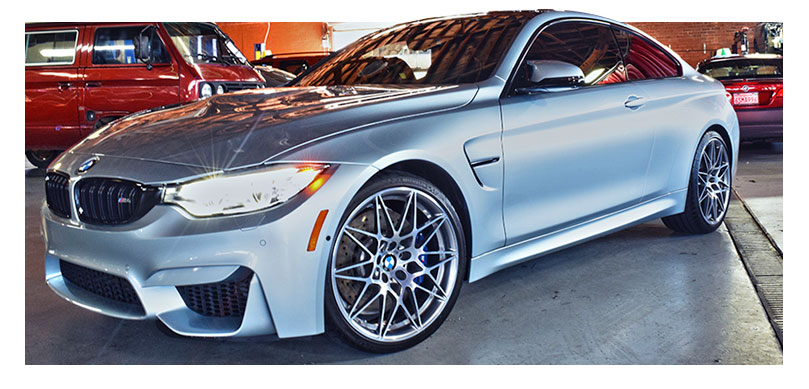Swirl Marks
WHAT ARE SWIRL MARKS?
Swirl marks, or buffer marks as some people refer to them, are circular cuts or abrasions in the clear coat layer of your paint. They take the form and reflect the diameter of the buffing pad and follow the direction in which the detailer was moving the buffer along the paint surface. Many times the area will have reduced degree of shine.
These cuts and abrasions reflect the light differently off the panels of the vehicle. The light will bounce off in various directions, instead of uniformly in one direction. You will see the most variance in direct sunlight. The shine and clarity will be greatly affected because of these dreaded “swirl marks.”
HOW DID THEY GET THERE?
Swirl marks are not a factory option, and they don’t just suddenly appear out of the blue. Somebody, in the process of doing something to the paint surface, put them there.
Unfortunately, there are many reasons why swirl marks appear; here are some of the explanations.
- Choosing a buffing pad that is too aggressive is common. A heavy cut wool pad will inflict deep swirls on most clear coat surfaces. In fact, the use of many wool pads on a clear coat surface will leave swirl marks.
- Using the buffer at a very high speed will continue to put swirls in the finish. Speed creates heat. Heat softens the clear and the combination is a recipe not only for swirl marks, but also for “burning” the paint finish.
- The wrong choice of compound or polish can also produce the swirl marks. Using a product that is too aggressive will cut into the surface quicker and deeper and leave swirl marks.
- Not using enough compound or polish will quicken the appearance of swirls. Keeping enough product between the buffing pad and the clear coat will act as a lubricant and slow the swirling process down.
- Not keeping the buffing pad flat on the surface can also cause swirls. Many detailers have a tendency to “come up on edge” with the outer part of the buffing pad. Doing this will put swirls in the clear coat much faster.
In addition to these issues, there are other variables to consider. Know the model vehicle you are working on. Has this make of vehicle given you trouble previously? Some vehicles have extremely soft clear coats and are easily scratched. It doesn’t take much to put a mark on a clear coat. If you get to know how soft or hard the clear is, you can better judge what can and can’t be done to the surface without leaving swirl marks.
What exactly needs to be done to the clear coat? Are there major imperfections on or in the paint? Does it need a buff and a wax? If you are not doing corrective procedures to the paint, you should utilize the least aggressive method possible.
If you take account of all the factors that could impact the creation of swirl marks before you begin to work on the car, you can develop a game plan to do the job correctly.
Call Us for Auto Body and Collision in San Diego







Leave A Comment